The African savanna holds many wonders, but few creatures command as much awe and respect as the Black Rhino. Often misunderstood and tragically endangered, this magnificent browser is a cornerstone of its ecosystem and a symbol of wild Africa. Join us on a journey to uncover the secrets of the Black Rhino, from its ancient lineage to its crucial role in today’s world, and learn how we can all contribute to its survival.
Despite its name, the Black Rhino is not truly black. Its skin color ranges from dark grey to brownish, often appearing darker due to the mud it wallows in. The common misconception arises from its distinction from the “White Rhino,” which is also grey. The key difference lies not in color, but in their mouths and feeding habits, a fascinating adaptation we will explore.
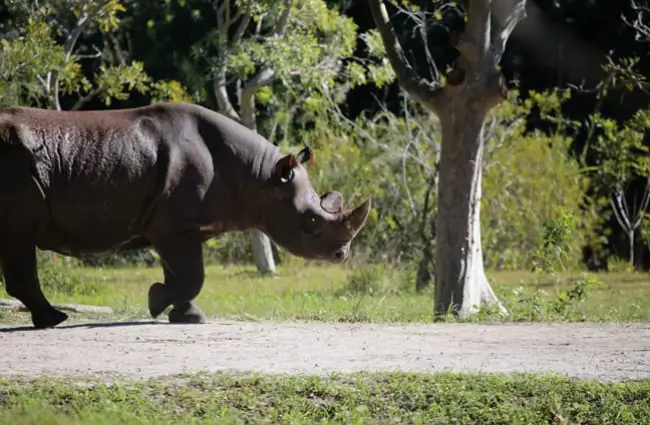
Unveiling the Black Rhino: Basic Biology and Behavior
Physical Characteristics and Distinguishing Features
The Black Rhino, scientifically known as Diceros bicornis, is a formidable creature. Adults typically stand between 1.4 to 1.8 meters (4.6 to 5.9 feet) tall at the shoulder and can weigh anywhere from 800 to 1,400 kilograms (1,760 to 3,080 pounds), with some large males exceeding 1,800 kilograms (4,000 pounds). They possess two horns, made of keratin, the same material as human fingernails. The front horn is usually longer, averaging 50 centimeters (20 inches) but capable of reaching up to 140 centimeters (55 inches). These horns are not just for show, they are vital tools for defense and foraging.
The most distinctive feature setting the Black Rhino apart from its White Rhino cousin is its prehensile, hooked upper lip. This specialized lip acts like a finger, allowing it to grasp and pluck leaves, twigs, and fruits from bushes and trees. In contrast, the White Rhino has a broad, flat lip adapted for grazing grasses.
Habitat and Distribution: Where to Find These Giants
Black Rhinos are native to eastern and southern Africa. Historically, their range was vast, spanning much of sub-Saharan Africa. Today, their populations are fragmented and largely confined to protected areas and national parks in countries such as Kenya, Tanzania, Namibia, South Africa, and Zimbabwe. They prefer habitats with dense bushland, thickets, and acacia savannas, which provide ample browsing material and cover. These areas often include water sources for drinking and wallowing, which is essential for cooling down and deterring parasites.
For an animal lover hoping to spot a Black Rhino in the wild, the best approach involves visiting well-managed national parks and reserves known for their rhino populations. These include the Serengeti and Ngorongoro Crater in Tanzania, Maasai Mara in Kenya, Etosha National Park in Namibia, and Kruger National Park in South Africa. Engaging with reputable safari operators and local guides who are knowledgeable about rhino movements and conservation efforts significantly increases the chances of a sighting, while also supporting local communities and conservation initiatives.
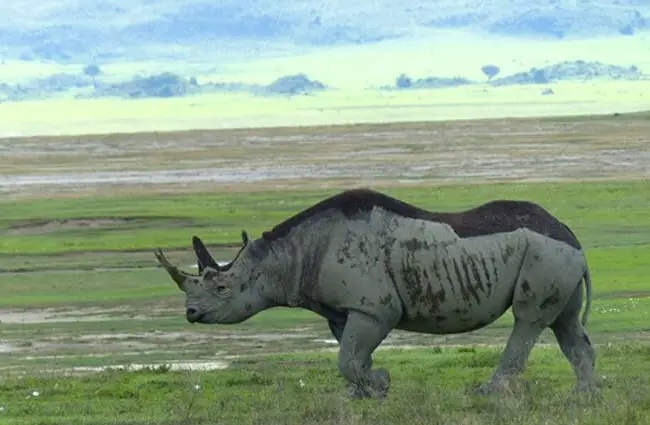
Diet and Foraging Behavior: The Browser’s Life
As dedicated browsers, Black Rhinos have a diverse diet consisting primarily of woody twigs, shoots, leaves, and thorny bushes. Their hooked lip is perfectly adapted for this purpose, allowing them to selectively pick out preferred plant parts. They are not picky eaters and will consume a wide variety of vegetation, often stripping branches clean. This feeding behavior plays a crucial role in shaping their habitat, preventing overgrowth of certain plant species and promoting biodiversity.
Black Rhinos are most active during the cooler parts of the day, at dawn and dusk, when they forage. During the heat of midday, they seek shade and often wallow in mud or dust. Wallowing serves multiple purposes: it cools their bodies, protects their skin from the sun, and helps to dislodge parasites. They are also known to drink water daily, if available, but can survive for several days without it by obtaining moisture from their diet.
Social Structure and Temperament
Black Rhinos are generally solitary animals, with the exception of mothers and their calves. While they may occasionally gather at waterholes or feeding grounds, these aggregations are usually temporary. Males are territorial and will mark their areas with urine and dung piles, known as “middens.” These middens serve as communication points, signaling presence and reproductive status to other rhinos.
Despite their imposing size, Black Rhinos are known for their unpredictable and sometimes aggressive temperament. They have poor eyesight but an excellent sense of smell and hearing. When startled or threatened, they may charge, often without warning. This behavior, while intimidating, is typically a defensive response rather than an act of aggression. They are surprisingly agile for their size and can reach speeds of up to 55 kilometers per hour (34 miles per hour).
The Black Rhino’s Journey Through Time and Ecosystem
Evolutionary History: An Ancient Lineage
The evolutionary history of rhinos stretches back millions of years. The lineage leading to modern rhinos diverged from other odd-toed ungulates, like horses and tapirs, during the Eocene epoch, around 50 million years ago. The genus Diceros, to which the Black Rhino belongs, emerged in Africa. Fossil records indicate that early forms of Black Rhinos were present in Africa several million years ago, adapting to changing environments and developing their distinctive browsing morphology. Their survival through various geological periods underscores their resilience and adaptability, making them living relics of a bygone era.
Mating and Reproduction: A Slow Path to Recovery
Black Rhinos have a relatively slow reproductive rate, which significantly impacts their population recovery efforts. Females reach sexual maturity between 4 to 6 years of age, while males mature later, around 7 to 10 years. Mating can occur year-round, but there may be peaks depending on environmental conditions. The gestation period is long, lasting approximately 15 to 16 months. A single calf is born, weighing around 25 to 50 kilograms (55 to 110 pounds).
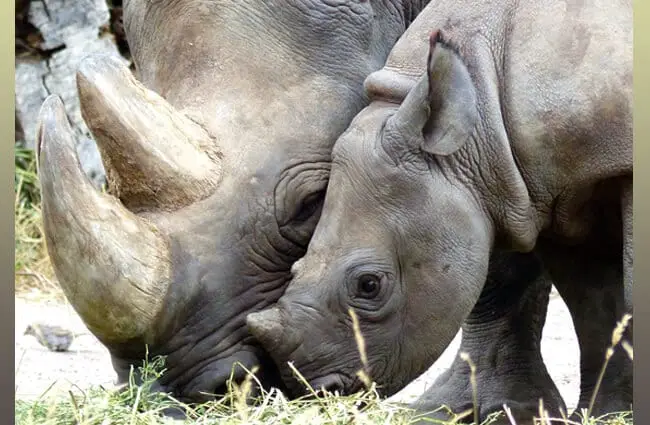
The calf stays with its mother for an extended period, typically 2 to 4 years, learning essential survival skills. During this time, the mother will not conceive again, ensuring her full attention is dedicated to raising her offspring. This long inter-calving interval means that even with successful conservation, population growth is inherently slow, making every individual rhino vital to the species’ future.
Contribution to the Ecosystem and Interaction with Other Animals
Black Rhinos are considered a keystone species in their habitats. Their browsing habits help to maintain the balance of the savanna and bushland ecosystems. By consuming woody vegetation, they prevent the encroachment of dense thickets, creating open areas that benefit grazers like zebras and wildebeest. This selective browsing also promotes plant diversity and nutrient cycling.
Their interaction with other animals is primarily indirect. While they are not typically prey for large predators as adults due to their size and formidable horns, calves can be vulnerable to hyenas, lions, and wild dogs. Oxpecker birds are often seen perched on rhinos, feeding on ticks and other parasites, forming a symbiotic relationship. Rhinos also share waterholes and feeding grounds with a variety of other herbivores and carnivores, contributing to the rich biodiversity of African wildlife.
Black Rhinos and Humanity: Challenges and Hope
Interaction with Humans: A Troubled History
The history of Black Rhinos and humans is complex and, unfortunately, largely tragic. For centuries, rhinos coexisted with human populations. However, the 20th century brought an unprecedented decline due to rampant poaching driven by demand for their horns. Rhino horn has been erroneously valued in some traditional medicine practices and as a status symbol, despite having no proven medicinal properties. This demand has pushed the Black Rhino to the brink of extinction, making it critically endangered.
For a Hiker Encountering a Black Rhino in the Wild:
Encountering a Black Rhino can be a thrilling but potentially dangerous experience. Their poor eyesight means they might not see you until you are close, and their unpredictable nature means they might charge if startled.
- Stay Calm: Panic can lead to poor decisions.
- Do Not Run: Running can trigger their chase instinct. They are faster than you.
- Seek Cover: If possible, slowly and quietly move behind a large tree, boulder, or dense bush. Rhinos are less likely to charge through dense obstacles.
- Make Noise (Cautiously): Some experts suggest making a loud noise to alert the rhino to your presence, giving it a chance to move away. However, this can also provoke a charge if the rhino feels threatened. Use extreme caution.
- Give Space: Always maintain a respectful and safe distance. Never approach a rhino.
- Follow Guide Instructions: If you are with a professional guide, always follow their instructions immediately. They are trained for such situations.
The best advice is to avoid surprising a rhino in the first place by being aware of your surroundings and making some noise while moving through dense bush.
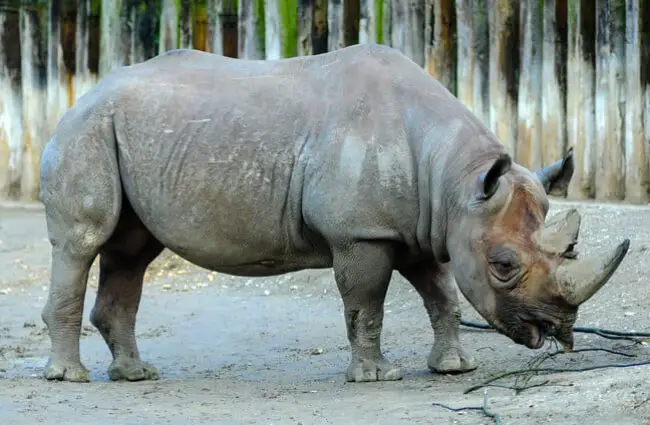
Contribution to Human Culture and Conservation Efforts
Despite the challenges, Black Rhinos hold significant cultural value. They are iconic symbols of African wilderness, strength, and resilience. They feature in folklore, art, and national emblems across the continent. Their majestic presence draws tourists, supporting local economies and funding conservation initiatives. The fight to save the Black Rhino has become a global conservation movement, uniting governments, NGOs, and local communities.
Conservation efforts include:
- Anti-Poaching Patrols: Highly trained rangers protect rhinos on the ground.
- Habitat Protection: Securing and expanding protected areas.
- Community Engagement: Involving local communities in conservation benefits.
- Translocation: Moving rhinos to safer, new habitats to establish new populations.
- Breeding Programs: Both in situ and ex situ (zoo-based) programs to boost numbers.
- Demand Reduction: Campaigns to reduce the demand for rhino horn.
Caring for Black Rhinos in Captivity: A Zookeeper’s Role
Zookeepers play a critical role in the global conservation strategy for Black Rhinos, managing breeding programs and educating the public. Caring for these magnificent animals requires specialized knowledge and dedication.
Tasks a Zookeeper Should Perform:
- Dietary Management: Provide a carefully balanced diet of browse (tree branches, leaves), hay, and specialized rhino pellets to mimic their natural diet and ensure proper nutrition.
- Habitat Enrichment: Regularly introduce new enrichment items like logs, scent trails, puzzle feeders, and different types of browse to stimulate natural behaviors and prevent boredom.
- Health Monitoring: Conduct daily visual health checks, observe behavior for any signs of illness or injury, and assist veterinarians with medical procedures, vaccinations, and regular check-ups.
- Enclosure Maintenance: Keep enclosures clean, safe, and well-maintained, ensuring access to fresh water, shade, and suitable wallowing areas.
- Behavioral Observation: Document individual rhino behaviors, social interactions (if applicable), and reproductive cycles to inform breeding decisions and management strategies.
- Training: Utilize positive reinforcement training for cooperative behaviors during veterinary exams or routine care, reducing stress for the animal.
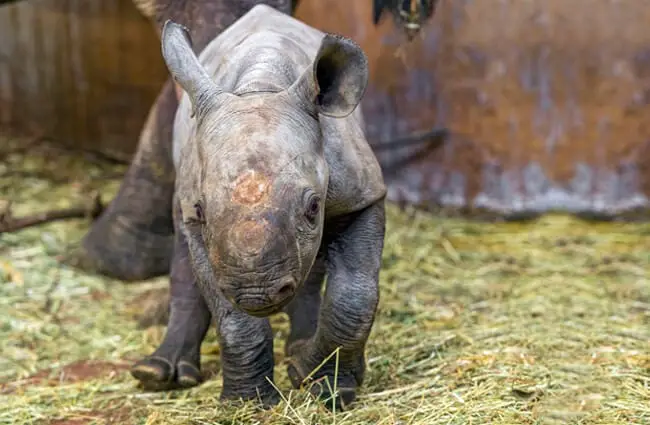
What a Zookeeper Should Avoid:
- Direct Confrontation: Never directly confront or corner a rhino. Always respect their space and unpredictable nature.
- Inconsistent Routine: Rhinos thrive on routine. Avoid sudden changes in feeding times, keeper staff, or enclosure access without careful planning.
- Over-Handling Calves: While adorable, excessive human interaction with calves can lead to habituation, making future wild reintroduction difficult or fostering inappropriate social behaviors.
- Ignoring Behavioral Cues: Failure to recognize signs of stress, aggression, or illness can lead to serious consequences for both the rhino and the keeper.
- Poor Enclosure Security: Neglecting fence integrity or gate security is a critical error, given the strength and potential danger of a rhino.
Fascinating Facts About the Black Rhino
The Black Rhino is full of surprises. Here are some intriguing facts:
- Not Really Black: As mentioned, their name is a misnomer, likely to distinguish them from the “White” Rhino.
- Excellent Sense of Smell: Despite poor eyesight, their olfactory senses are incredibly acute, helping them detect predators, food, and other rhinos.
- Speedy Giants: They can run surprisingly fast, reaching speeds up to 55 km/h (34 mph) over short distances.
- Solitary Wanderers: Unlike the more social White Rhino, Black Rhinos are generally solitary, preferring to roam alone.
- Prehensile Lip: Their unique hooked upper lip is a specialized tool for browsing, allowing them to grasp and pull leaves from branches.
- Mud Lovers: Wallowing in mud is not just for fun; it helps cool them down, protects their skin from sun and insects, and removes parasites.
- Ancient Lineage: Rhinos have roamed the Earth for millions of years, making them living fossils.
- Critically Endangered: Due to poaching, their numbers plummeted dramatically in the 20th century, making them one of the most endangered large mammals.
- Communication Through Dung: Rhinos use communal dung piles, called middens, as a form of communication, leaving scent markers for others.
- Long Lifespan: In protected environments, Black Rhinos can live for 30 to 35 years, and sometimes even longer.
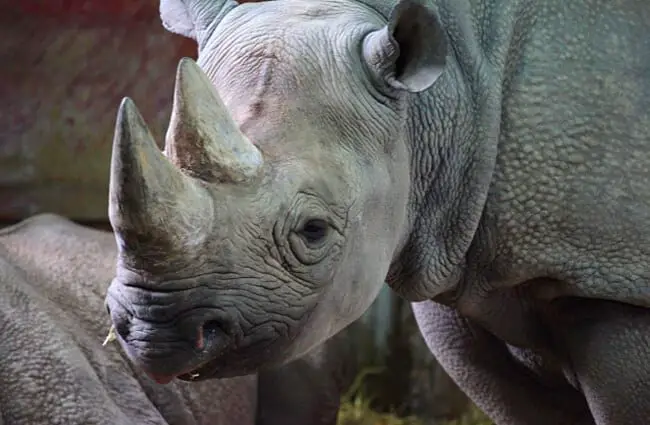
Conclusion: A Future for the Black Rhino
The Black Rhino stands as a powerful testament to nature’s resilience and a stark reminder of humanity’s impact. From its unique browsing adaptations and ancient evolutionary journey to its vital role in shaping African ecosystems, every aspect of this magnificent creature underscores its importance. While the shadow of extinction looms large, dedicated conservation efforts, supported by global awareness and local action, offer a glimmer of hope.
Understanding the Black Rhino is the first step toward protecting it. Whether you are a student researching its habitat, an animal lover dreaming of a safari, an aspiring zoologist, a hiker in the wild, or a zookeeper dedicated to its care, your knowledge and actions contribute to its survival. By championing these iconic browsers, we ensure that future generations can also marvel at the sight of a Black Rhino, a true symbol of wild Africa, thriving in its natural home.

![Red Angus Closeup of a beautiful Red Angus cowPhoto by: U.S. Department of Agriculture [pubic domain]https://creativecommons.org/licenses/by/2.0/](https://animals.net/wp-content/uploads/2020/03/Red-Angus-4-238x178.jpg)




![Red Angus Closeup of a beautiful Red Angus cowPhoto by: U.S. Department of Agriculture [pubic domain]https://creativecommons.org/licenses/by/2.0/](https://animals.net/wp-content/uploads/2020/03/Red-Angus-4-100x75.jpg)

